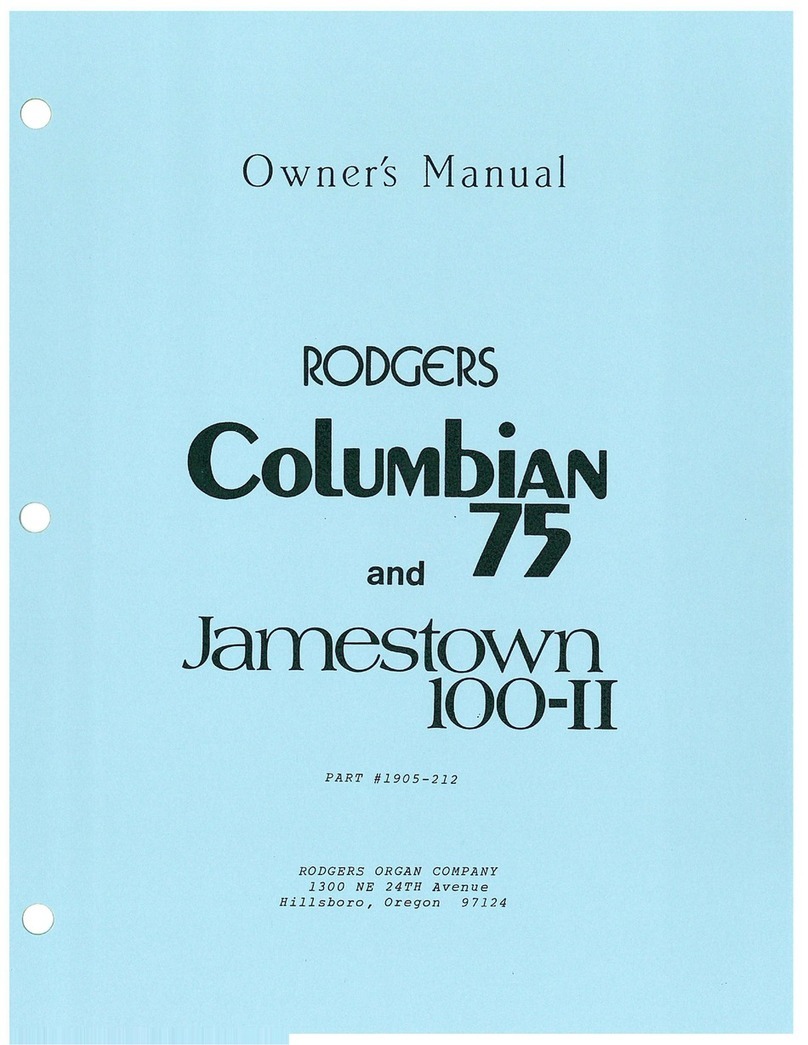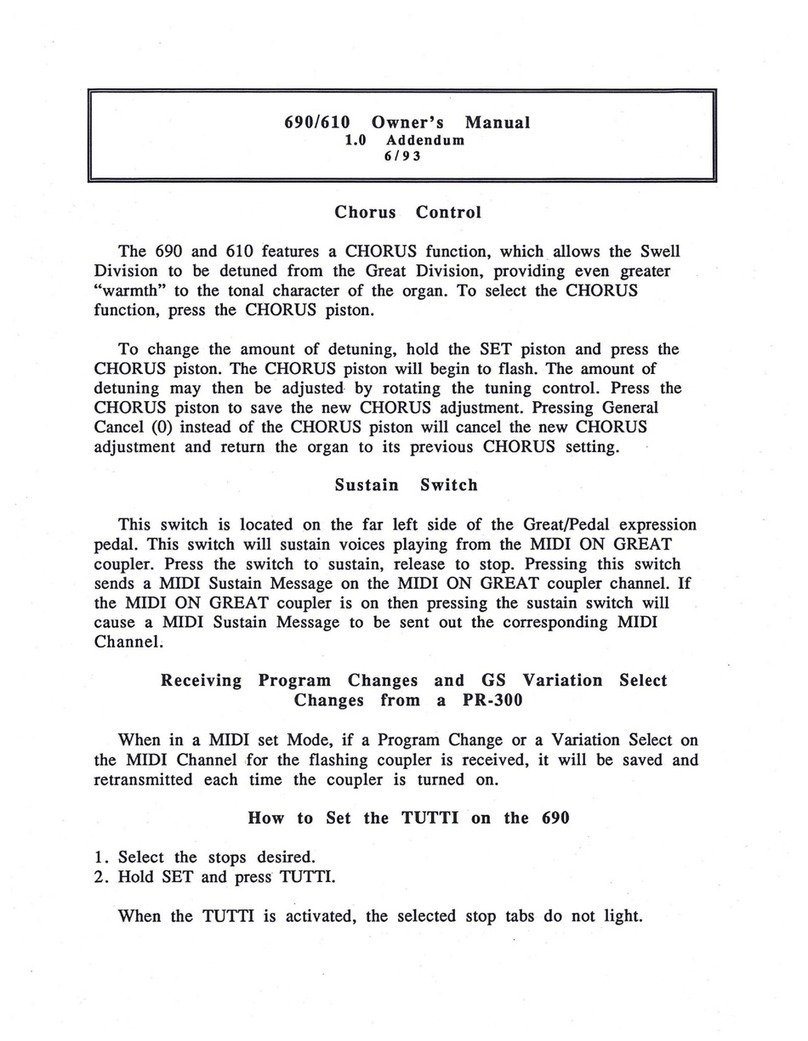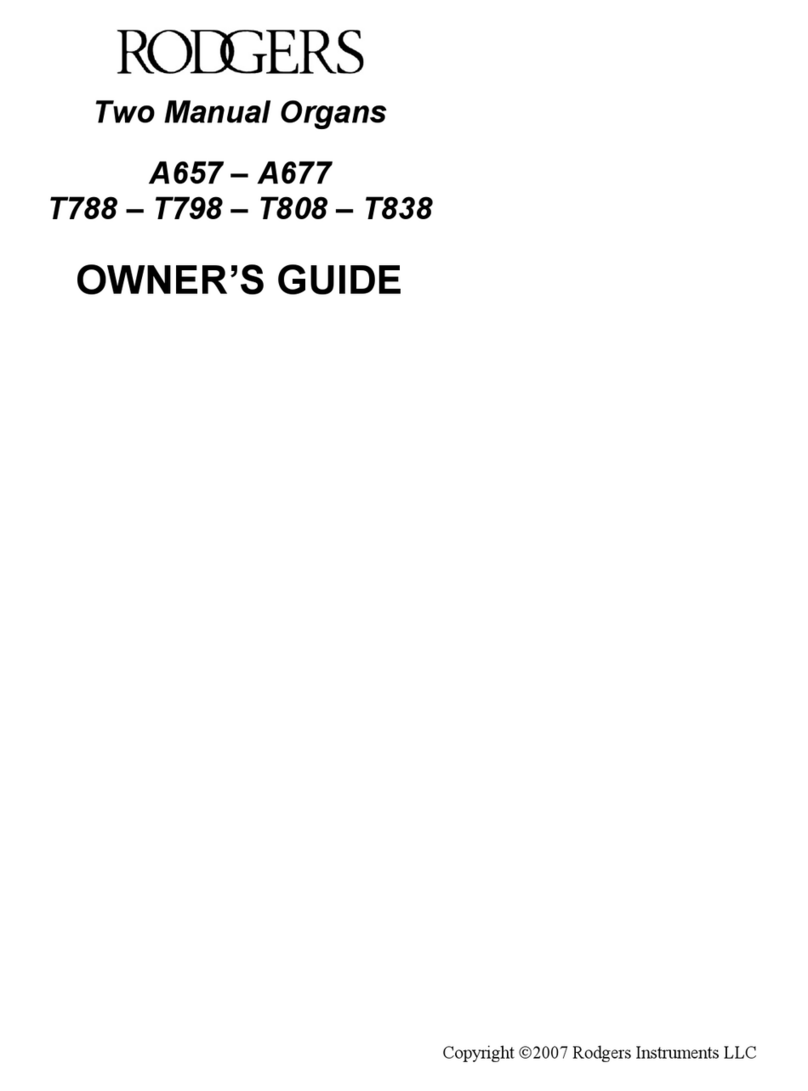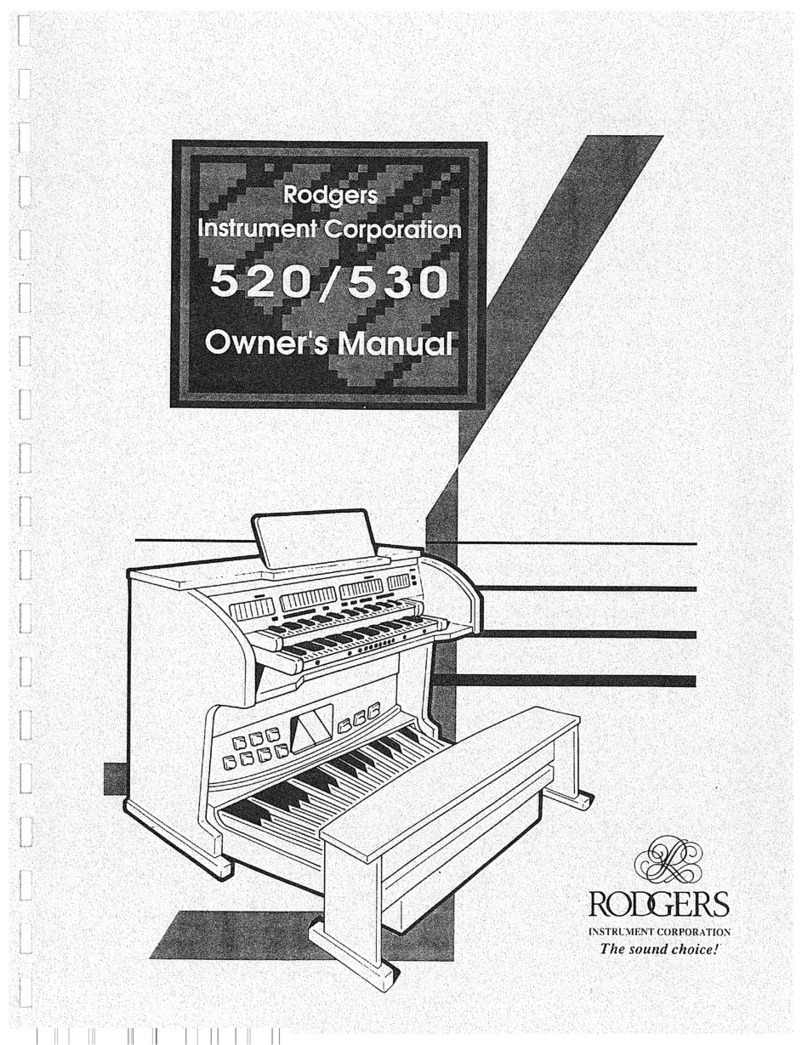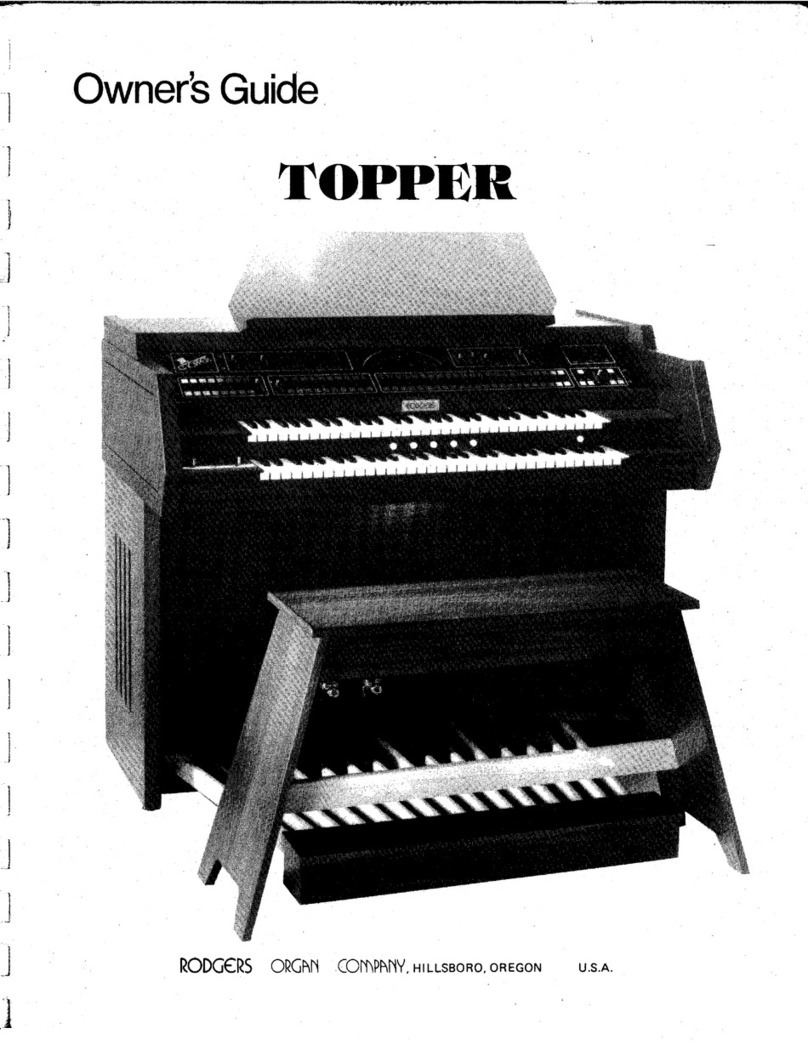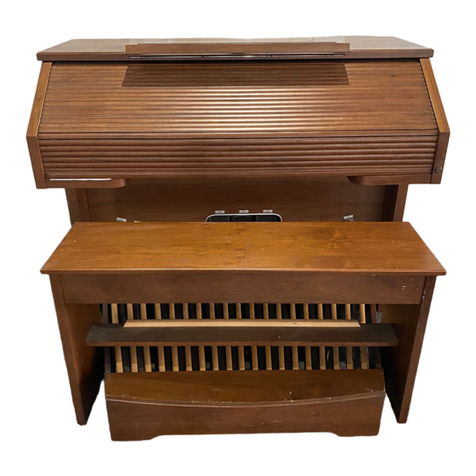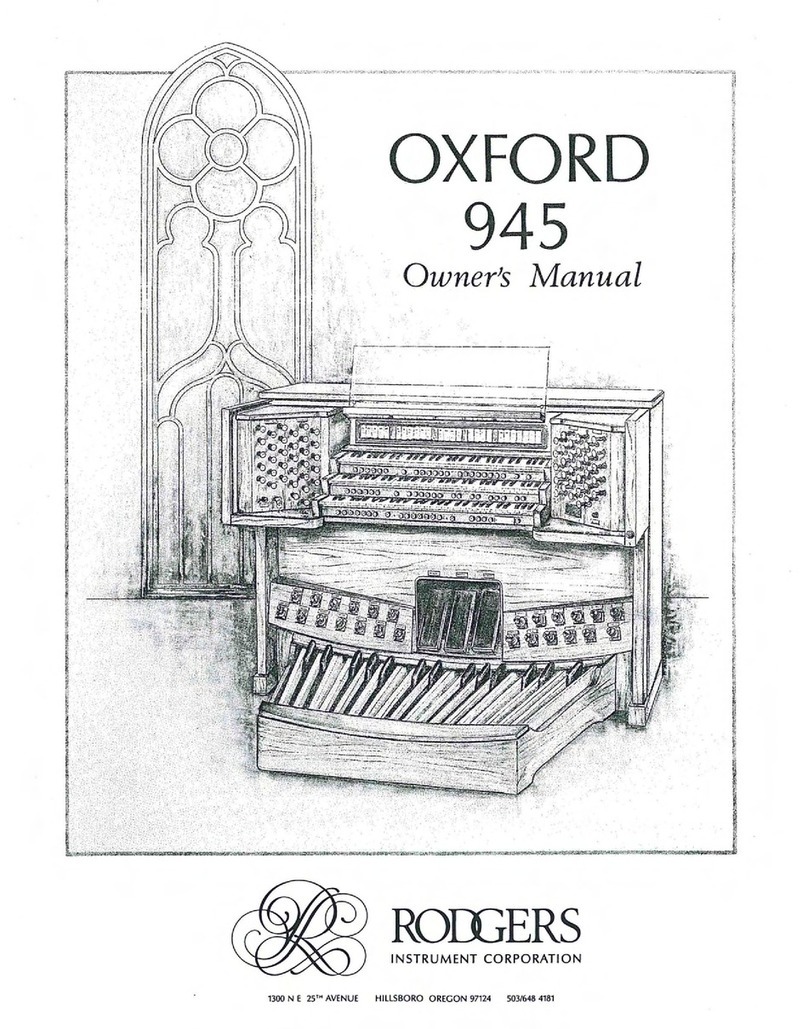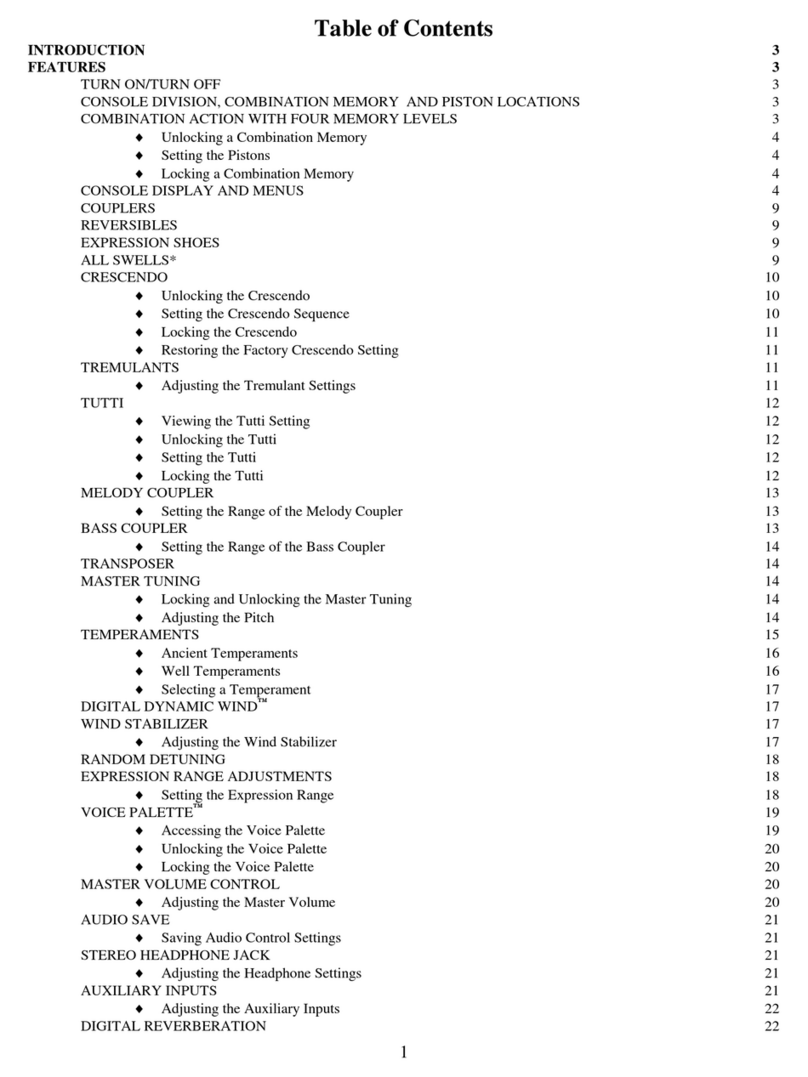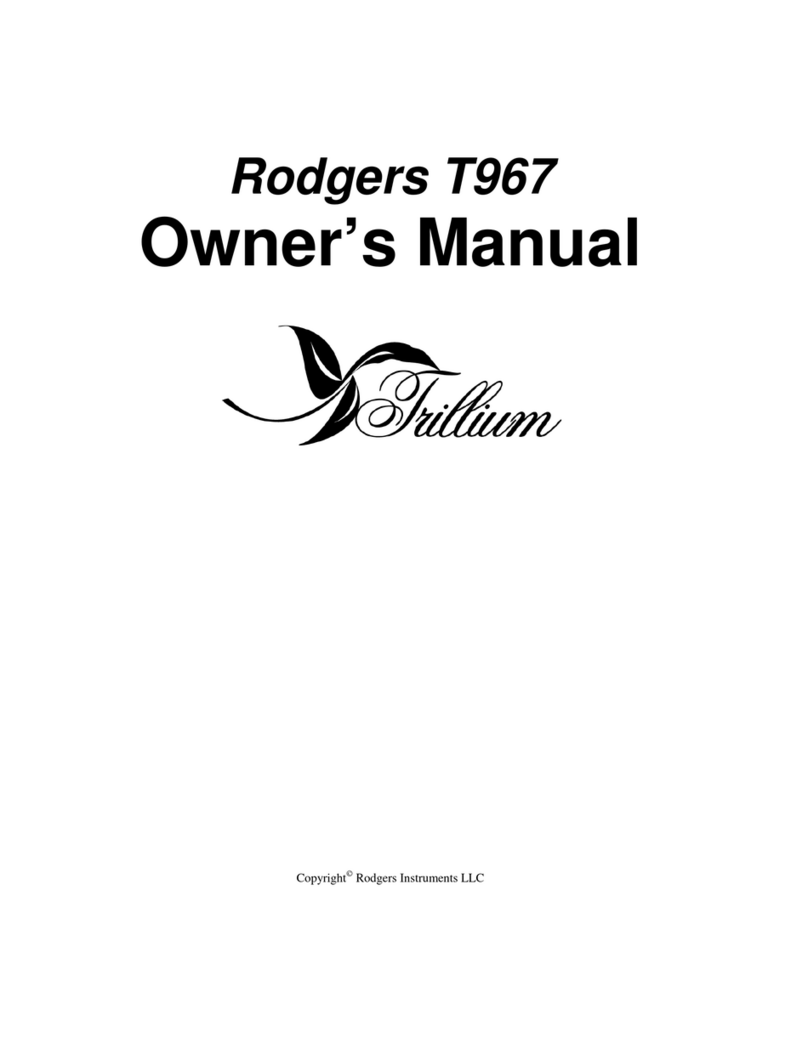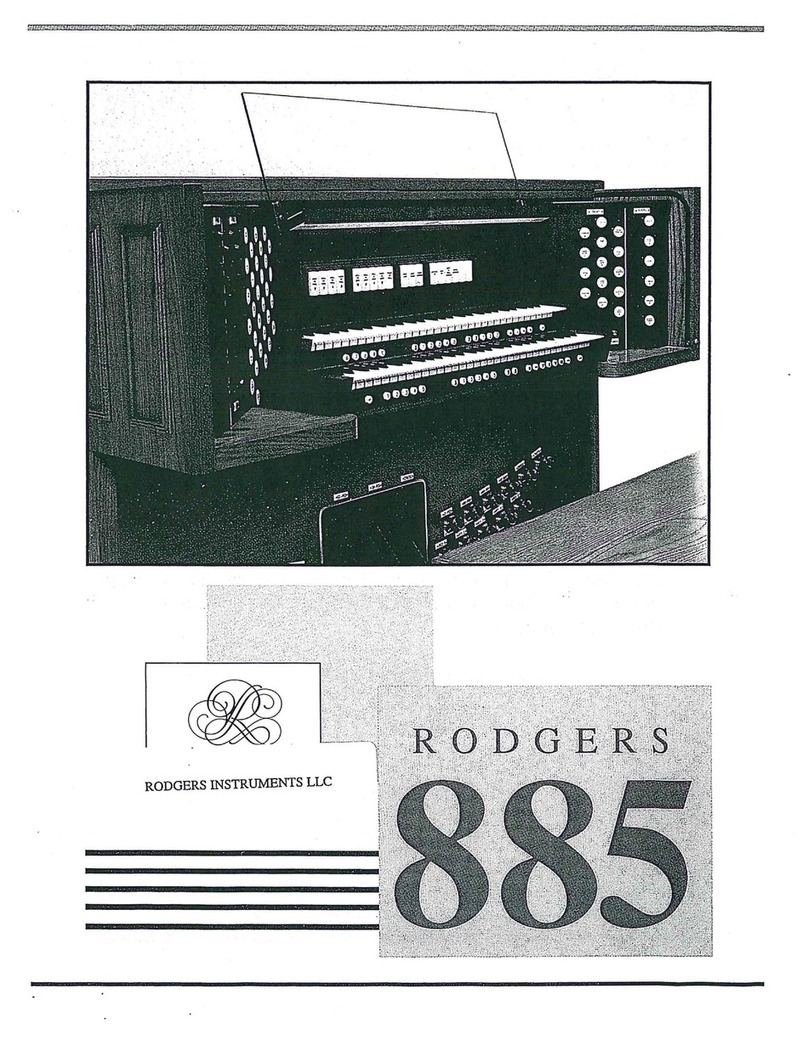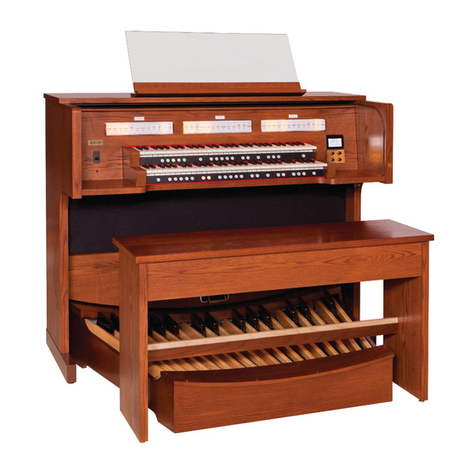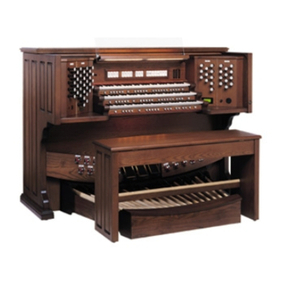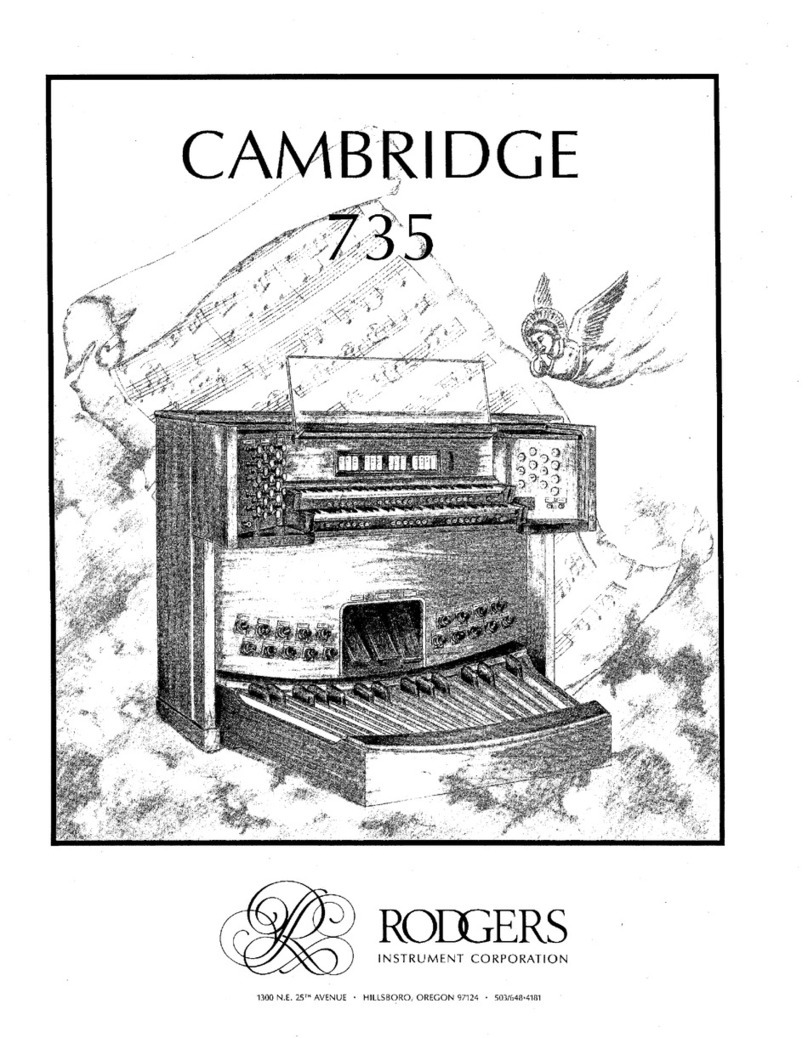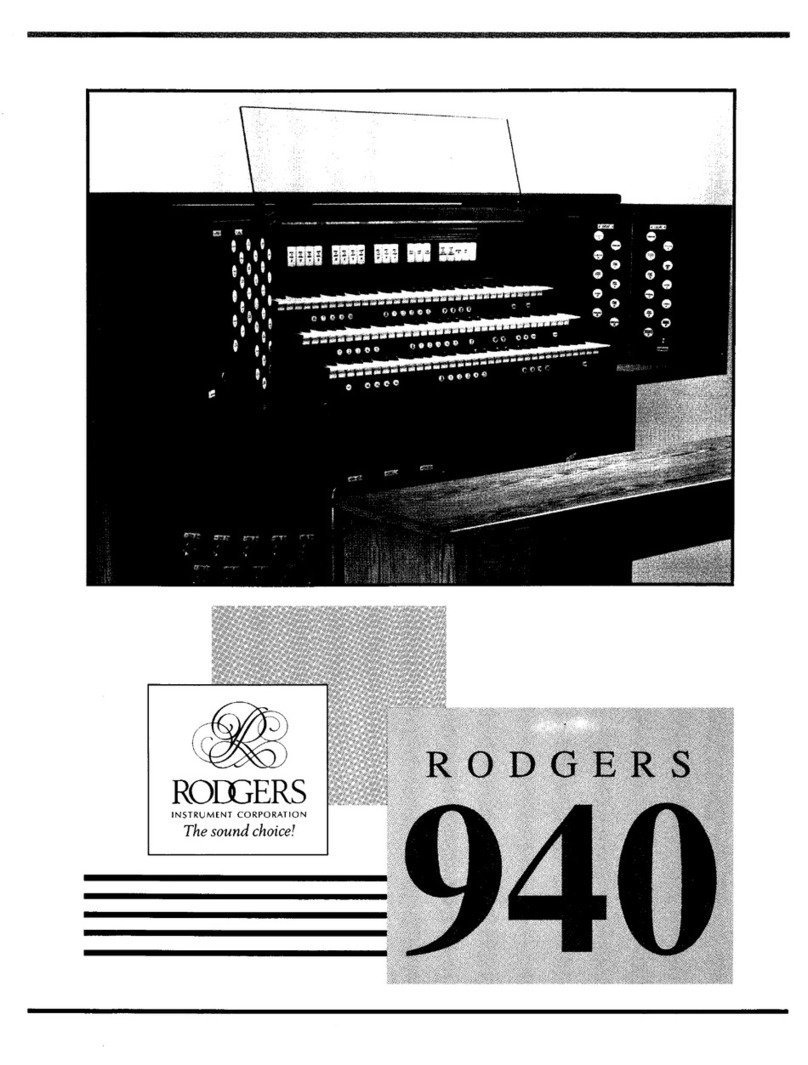
CONSOLE DISPLAY AND MENUS
The Rodgers 960
is
equipped with atwo-line Console Display window located
in
the right
drawknob panel. This display indicates the Transposer setting, and
it
can be used to alter many
other settings and organist preferences including MIDI settings, Voice Palette, and Tremulant
rate and depth, among many others.
Two controls are used to select and operate the features
of
the Console Display. The
smaller knob, located near the Console Display,
is
called the Select Knob and
is
used
to
select
different menu items
to
be changed. When the Console Display reads "TRANSPOSER 0", this
knob controls the Transposer function. The largerflush dial, near the Console Display
is
called the Alpha
Dial
and is used to change amenu setting which has been selected.
To move to anew menu
or
to make anew setting
in
the same menu
in
the Console
Display, hold SET and turn the Select Knob. Note: Once
any
menu other than the Transposer
menu has been selected, it is
no
longer necessary to
hold
SET
to selectfurther menus.
The blinking square in the Console Display, called the cursor, indicates the setting which
is
currently selected. Rotating the Alpha Dial will change the value
of
any selected setting.
There are three different menus. The User Menu accesses organ and audio settings such
as Voice Palette, Tremulant settings, Master Volume, and Auxiliary Input controls. This menu
is
accessed by holding
SET
and turning the Select Knob counter clockwise (left) from the
Transposer menu.
The second menu controls MIDI settings and
is
accessed by holding SET and turning the
Select Knob clockwise (right) from the Transposer menu.
The third menu also accesses organ and audio settings, but it
is.
only available when
headphones are used. Note: Please refer to the "Stereo Headphone
Jack"
section.
To return to the Transposer display, press General Cancel.
COMBINATION
ACTION
WITH
SIX
MEMORY
LEVELS
The Rodgers 960 features acombination action easily changed by the organist from the
console. The organist can pre-select registrations and make rapid changes
in
tone color using
this advanced system.
Rodgers' microprocessor combination action
is
aspecially refined six-memory system.
This effectively multiplies the number
of
physical pistons
on
the console by six.
The
12
General pistons simultaneously affect
all
stops and controls on the Great, Swell,
Choir and Pedal.
All
manual and pedal registrations may be changed by pressing aGeneral
piston.
3
